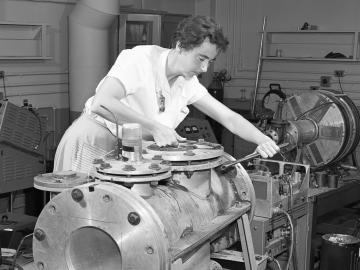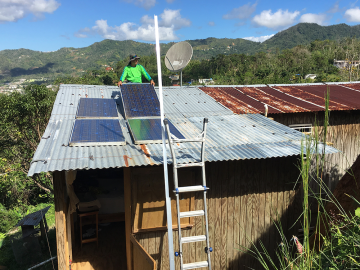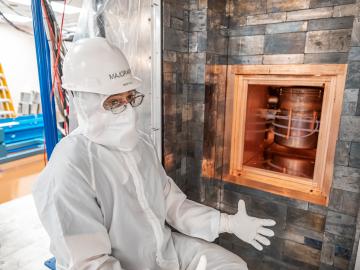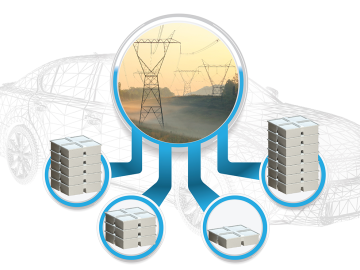
Filter News
Area of Research
- (-) Energy Science (142)
- (-) Materials (101)
- (-) Neutron Science (29)
- Advanced Manufacturing (22)
- Biology and Environment (58)
- Biology and Soft Matter (1)
- Building Technologies (1)
- Computational Engineering (1)
- Computer Science (6)
- Electricity and Smart Grid (3)
- Energy Frontier Research Centers (1)
- Functional Materials for Energy (1)
- Fusion and Fission (11)
- Fusion Energy (7)
- Isotopes (1)
- Materials for Computing (11)
- Mathematics (1)
- National Security (15)
- Nuclear Science and Technology (15)
- Nuclear Systems Modeling, Simulation and Validation (1)
- Quantum information Science (9)
- Sensors and Controls (1)
- Supercomputing (81)
News Topics
- (-) 3-D Printing/Advanced Manufacturing (92)
- (-) Advanced Reactors (9)
- (-) Exascale Computing (3)
- (-) Grid (40)
- (-) Mathematics (3)
- (-) Nanotechnology (45)
- (-) Physics (30)
- (-) Quantum Science (16)
- Artificial Intelligence (16)
- Big Data (8)
- Bioenergy (34)
- Biology (19)
- Biomedical (23)
- Biotechnology (5)
- Buildings (38)
- Chemical Sciences (35)
- Clean Water (11)
- Composites (19)
- Computer Science (42)
- Coronavirus (23)
- Critical Materials (19)
- Cybersecurity (11)
- Energy Storage (88)
- Environment (67)
- Fossil Energy (3)
- Frontier (4)
- Fusion (8)
- High-Performance Computing (11)
- Hydropower (3)
- Irradiation (1)
- Isotopes (13)
- ITER (1)
- Machine Learning (12)
- Materials (100)
- Materials Science (99)
- Mercury (3)
- Microelectronics (1)
- Microscopy (29)
- Molten Salt (3)
- National Security (7)
- Neutron Science (128)
- Nuclear Energy (23)
- Partnerships (16)
- Polymers (22)
- Quantum Computing (4)
- Security (8)
- Simulation (4)
- Space Exploration (8)
- Statistics (1)
- Summit (9)
- Transportation (72)
Media Contacts

The old photos show her casually writing data in a logbook with stacks of lead bricks nearby, or sealing a vacuum chamber with a wrench. ORNL researcher Frances Pleasonton was instrumental in some of the earliest explorations of the properties of the neutron as the X-10 Site was finding its postwar footing as a research lab.

ORNL researchers Ben Ollis and Max Ferrari will be in Adjuntas to join the March 18 festivities but also to hammer out more technical details of their contribution to the project: making the microgrids even more reliable.

For nearly six years, the Majorana Demonstrator quietly listened to the universe. Nearly a mile underground at the Sanford Underground Research Facility, or SURF, in Lead, South Dakota, the experiment collected data that could answer one of the most perplexing questions in physics: Why is the universe filled with something instead of nothing?

When aging vehicle batteries lack the juice to power your car anymore, they may still hold energy. Yet it’s tough to find new uses for lithium-ion batteries with different makers, ages and sizes. A solution is urgently needed because battery recycling options are scarce.

Three scientists from the Department of Energy’s Oak Ridge National Laboratory have been elected fellows of the American Association for the Advancement of Science, or AAAS.

Merlin Theodore is one of eight new board members announced by President Biden; she will join the 25-member board for a six-year term.

ORNL researchers have identified a mechanism in a 3D-printed alloy – termed “load shuffling” — that could enable the design of better-performing lightweight materials for vehicles.

David McCollum, a senior scientist at the ORNL and lead for the lab’s contributions to the Net Zero World Initiative, was one of more than 35,000 attendees in Egypt at the November 2022 Sharm El-Sheikh United Nations Framework Convention on Climate Change, or UNFCCC, Conference of the Parties, also known as COP27.

Scientists at the Department of Energy’s Oak Ridge National Laboratory are leading a new project to ensure that the fastest supercomputers can keep up with big data from high energy physics research.

The presence of minerals called ash in plants makes little difference to the fitness of new naturally derived compound materials designed for additive manufacturing, an Oak Ridge National Laboratory-led team found.


